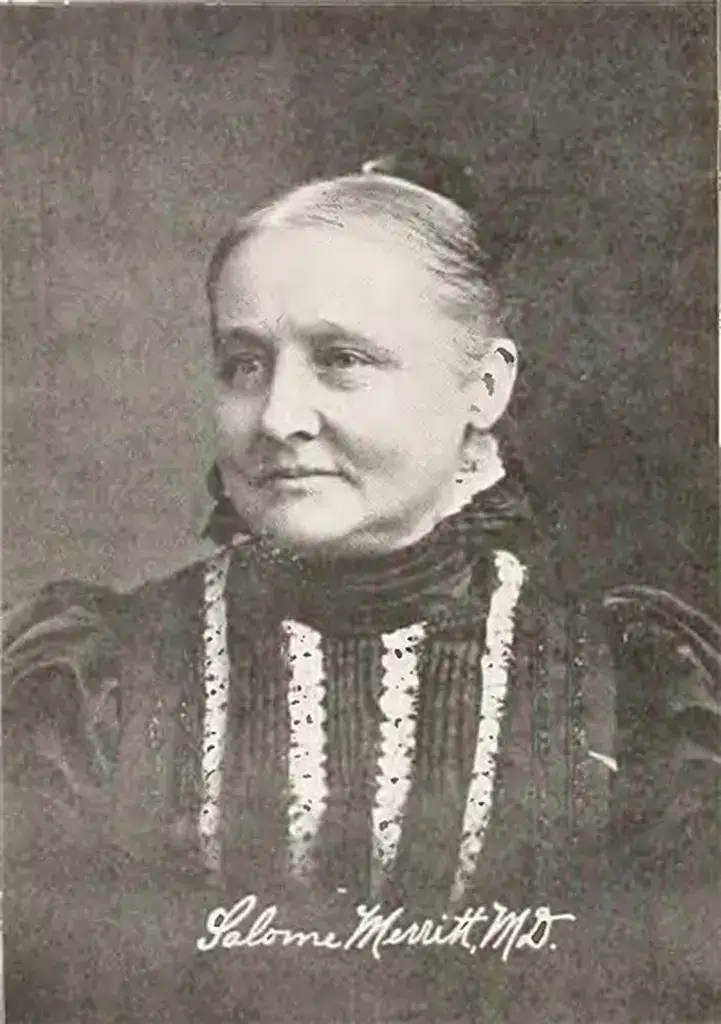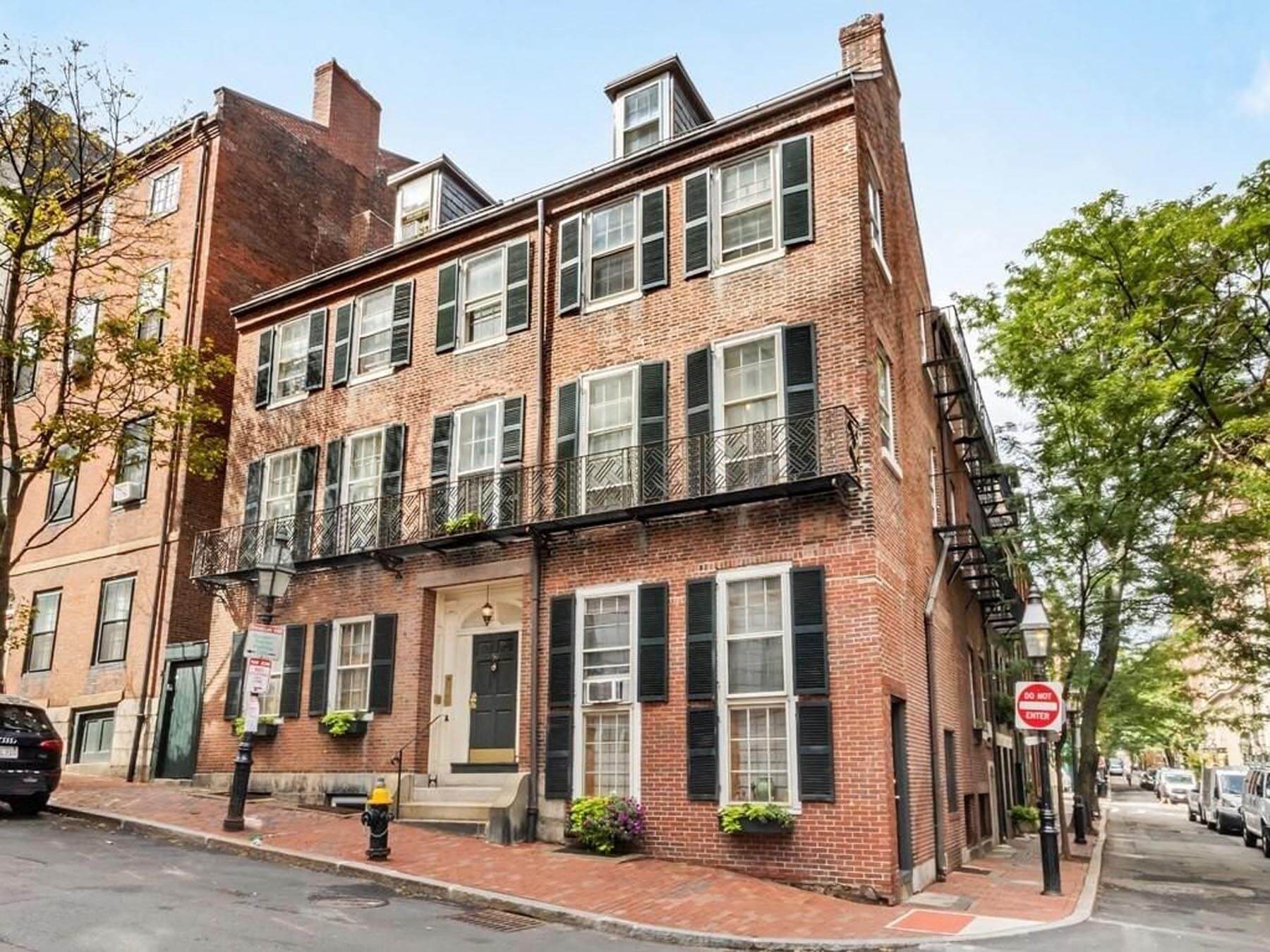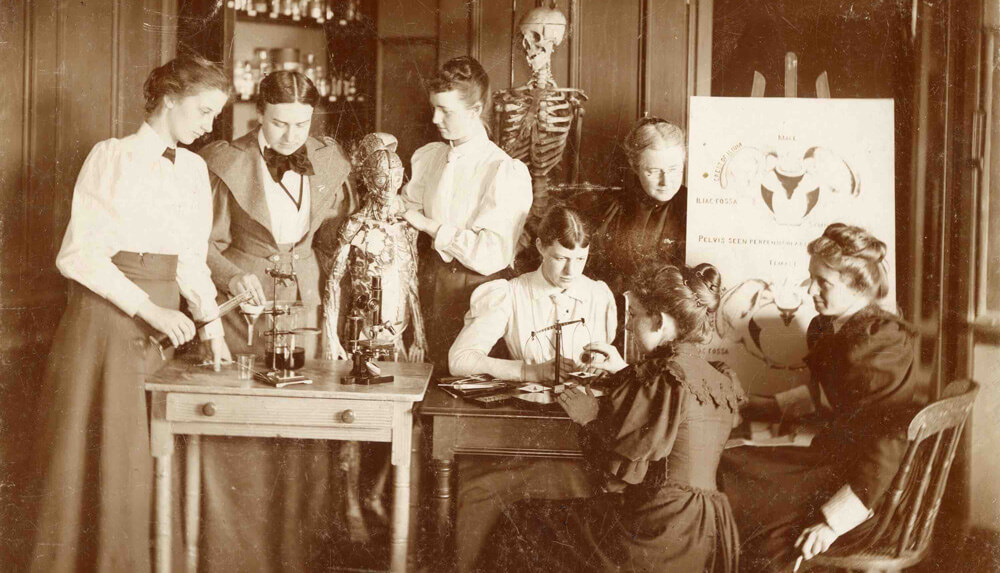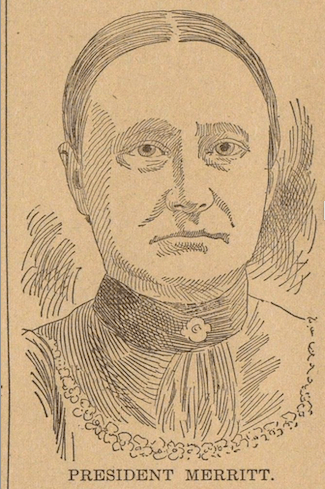Salome Merritt: Suffragist and Doctor of Beacon Hill
Salome Merritt MD (1843-1900) was a pioneering female doctor, suffragist, and activist who lived for several decades on Beacon Hill. Merritt was dedicated to improving the lives of her neighbors through scientific education, direct aid, and advocating for social and political change.
A descendent of an old Massachusetts family who came of age in an era of increasing opportunity for women’s education and political engagement, Salome Merritt (1843-1900) became a physician and activist. She lived for several decades on Beacon Hill at 59 Hancock Street which served as a base for her activism as well as her medical practice.
Merritt grew up in Templeton, Massachusetts in a large family and was afforded a high quality education for the time, especially for a girl. After high school, she graduated from a teaching college in Rhode Island as valedictorian. Following several years as an educator, Merritt decided to become a doctor and attended Boston Female Medical College before transferring to the New York Free Medical College for Women where she graduated after only a year of study in 1874. She moved to Boston two years later to start her practice.
As a doctor, Merritt saw patients at her Hancock Street home and was involved in bringing medical education, likely early biology studies, to high schools. She served on the Hospital Board of the Women’s Charity Club and as president of the Ladies’ Physiological Institute of Boston. Dubbed by the Ann Arbor Courier as “oldest woman’s club in the country,” the Institute provided education for women on public and family hygiene, medical care, anatomy, and physiology. These lectures were available to members and the public and were given in the evening so working women could attend. Merritt gave eight to twelve lectures a year that the Courier described as “thoroughly practical and plainly scientific, presenting them in a way not found elsewhere outside of medical colleges.” She was a leader in the field of scientific education for women and was clearly beloved by Institute members who published a poem celebrating Merritt’s health, intelligence, and kind heart for her fiftieth birthday.
In addition to her pioneering work as an early female doctor, Merritt was involved in several forms of activism. She was a dedicated suffragist and at one point was president of the National Woman Suffrage Association of Massachusetts. She contributed articles to newspapers focused on women’s issues such as The Woman’s Tribune and The Woman’s Journal and corresponded with significant figures in the women’s suffrage movement including Susan B. Anthony. In 1883, in response to an anti-suffrage canvas of Hancock Street, which was deemed statistically suspect, Dr. Merritt conducted her own door to door campaign to determine how many women on her street were in favor of suffrage. She determined that there were slightly more in favor of women’s right to vote than those opposed.
Finally, Merritt worked as a reformer on behalf of working women and children. She was a generous and caring neighbor who brought food to those who could not afford it during the holiday season and advocated for public funding to support those in need. As part of this effort, she helped get women elected to the school boards of Boston. During this period, women could not vote in Massachusetts aside from in school board elections. However, there was nothing to say they could not be elected to serve and thus several women became school board members during Merritt’s time. As a resident of the diversifying West End community, Merritt took a strong stance in favor of Catholic representation on school boards arguing against “Know-nothingism” and Protestant supremacy and in favor of more tolerant and diverse perspectives.
Merritt moved from Hancock Street to Winter Hill in Somerville in 1896 and lived there for her final years. She was buried with her parents in Templeton. A lifelong activist and a woman ahead of her times in terms of her dedication to science, women’s rights, and education, Salome Merritt took advantage of the opportunities she was granted as an educated woman to help uplift other women in her neighborhood and across the country.
Article by Jaydie Halperin, edited by Bob Potenza
Source:
“It Was the Pioneer” (The Ann Arbor Courier, November 13, 1895); Letter from Susan B. Anthony to Salome Merritt (The Selected Papers of Elizabeth Cady Stanton and Susan B. Anthony: Their Place Inside the Body-Politic, 1887 to 1895); Office of Salome Merritt (Boston Women’s Heritage Trail); Find a Grave: Dr. Salome Merritt; Mary H. Graves,“Salome Merritt” in Representative Women of New England, (Boston, 1904); Reverend J.W. Hamilton, “School Suffrage Symposium”, (The Woman’s Journal, October 27, 1888); Salome Merritt, “Hancock Street and Women’s Suffrage”, (The Woman’s Journal, May 5, 1883); A.S. Thayer, “Dr Merritt’s Birthday” (The Woman’s Journal, March 18, 1893); Massachusetts and the 19th Amendment (National Parks Service); “News and Notes” (The Woman’s Journal, July 11, 1896); “Notes of Progress” (The Woman’s Tribune, April 1885)












